Why Aston Martin’s Vision Volante concept points to future of flying cars
British carmaker aims to help commuters bypass inner-city traffic
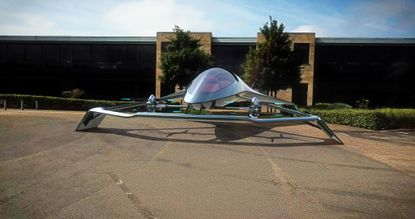
Aston Martin has unveiled its Volante Vision Concept flying car concept at the Farnborough Airshow, as the British carmaker joins the race to put new forms of transport in the skies.
The company has partnered with Bedfordshire’s Cornfield University and Rolls-Royce to develop the concept, which is designed to allow owners to bypass congested city streets.
The three-seater vehicle is capable of vertical take-off and landing (VTOL), with two sets of rotor blades at the front to control the angle of the car, while a large rotor behind the cabin provides lift.
Subscribe to The Week
Escape your echo chamber. Get the facts behind the news, plus analysis from multiple perspectives.

Sign up for The Week's Free Newsletters
From our morning news briefing to a weekly Good News Newsletter, get the best of The Week delivered directly to your inbox.
From our morning news briefing to a weekly Good News Newsletter, get the best of The Week delivered directly to your inbox.
The concept is powered by a hybrid-electric motor provided by Rolls-Royce’s electrical devision. The design has been penned in house by Aston Martin.
Cornfield University, meanwhile, has provided the brains behind the vehicle’s autonomous navigation systems and the user interface, which Engadget says is projected onto the “all-glass cockpit canopy”.
Although the flying car “is very much a design concept”, Aston Martin plans to build and trial a prototype version “in about two years”, adds Autocar.
Why develop a flying car?
The unveiling at the Hampshire air show may have surprised casual onlookers, most of whom will know Aston Martin for its high-end tourers, but the company has long seen the potential of flying cars.
Speaking to Auto Express, Aston Martin marketing chief Simon Sproule said: “We’ve all got an interest in next-generation mobility and low altitude air flight.
“Marek Reichman, [Aston Martin executive vice president and creative chief] and I went to see Cranfield about 18 months ago, as we saw this as an emerging area of luxury mobility. They introduced us to Rolls-Royce in terms of propulsion systems.”
Sproule said the expansion into the flying car market should also create jobs and lead to new technological innovations.
If the Volante Vision enters production, he claims, the craft would “be able to do London to Paris non-stop in about an hour. As the crow flies that’s about 200 to 250 miles, at a speed of about 200mph. Birmingham to London could be done in half an hour.”
Aston Martin would also join companies including Uber and Airbus in the flying car market.
However, Uber and Airbus’s concepts take the form of flying taxis, while the Volante Vision appears to be a vehicle for private use.
Has Aston Martin made anything like this before?
Sort of. The company teamed up with submarine manufacturer Triton last September to create a submersible dubbed Project Neptune.
The sub is available in strictly limited numbers and is kitted out by Aston Martin’s special operations department.
In 2016, the company also partnered with Quintessence Yachts and naval architects Mulder Design to build its AM37 power boat.
The yacht measures more than 11 metres (36ft) in length and can reach speeds of up to 50 knots (57mph), The Daily Telegraph reports.
Create an account with the same email registered to your subscription to unlock access.
Sign up for Today's Best Articles in your inbox
A free daily email with the biggest news stories of the day – and the best features from TheWeek.com
-
 Labour's Brexit conundrum
Labour's Brexit conundrumThe Explainer Keir Starmer backs 'twin track' strategy – build closer security ties with EU while ruling out single market, customs union and free movement
By The Week UK Published
-
 6 scenic white water rafting destinations to get your heart racing
6 scenic white water rafting destinations to get your heart racingThe Week Recommends Have a rip-roaring time on the water
By Catherine Garcia, The Week US Published
-
 Dangerous substances in Lunchables are raising concerns over children's health
Dangerous substances in Lunchables are raising concerns over children's healthIn the Spotlight High levels of lead and sodium were recently found in the snack packages
By Justin Klawans, The Week US Published
-
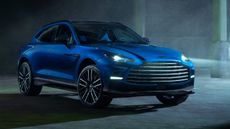 Aston Martin DBX707 review: the fastest production SUV on sale
Aston Martin DBX707 review: the fastest production SUV on salefeature A ‘true leviathan’, the 707 is a very different type of DBX
By The Week Staff Published
-
 Aston Martin Vantage Roadster: ‘a hot rod with manners’
Aston Martin Vantage Roadster: ‘a hot rod with manners’Speed Read Majestic convertible has a top speed of 190mph
By The Week Staff Last updated
-
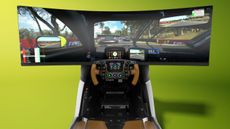 AMR-C01: Aston Martin unveils £57,500 luxury racing simulator
AMR-C01: Aston Martin unveils £57,500 luxury racing simulatorSpeed Read Could this be the ultimate addition to your home games room?
By Mike Starling Published
-
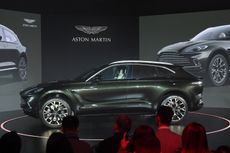 Troubled Aston Martin loses over £100m in 2019
Troubled Aston Martin loses over £100m in 2019In Depth The luxury car builder continues to plunge deeper into the red, and its £500 million bailout boost has been tarnished by coronavirus fears
By William Gritten Last updated
-
 Aston Martin has launched a luxury chopper for Bond villains
Aston Martin has launched a luxury chopper for Bond villainsSpeed Read If you’ve a few million to spare, the man at Aston Martin wants to talk to you
By The Week Staff Last updated
-
 Aston Martin heads off road with the all-new DBX
Aston Martin heads off road with the all-new DBXSpeed Read Aston Martin, Britain’s supercar maker, is branching out into SUVs. Its new DBX looks a winner.
By Nicole Garcia Merida Last updated
-
 Goodwood Revival 2019 review: racing through the ages
Goodwood Revival 2019 review: racing through the agesThe Week Recommends The annual event is home to ‘the world’s most expensive motor race’ but the off-track action steals the show
By The Week Staff Last updated
-
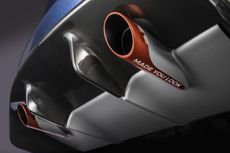 Aston Martin Vanquish 25: what we know about Ian Callum’s first solo project
Aston Martin Vanquish 25: what we know about Ian Callum’s first solo projectIn Depth Legendary car designer previews his reimagining of a two-decade-old classic
By The Week Staff Published